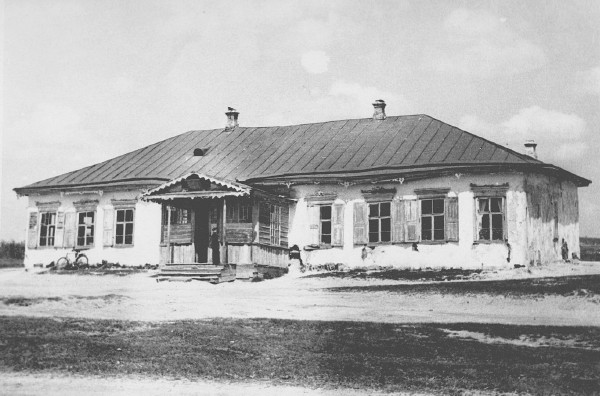Parochial schools
Parochial schools [парафіяльні школи; parafiialni shkoly]. Elementary schools that existed in Ukraine in various forms from the 11th century until the Revolution of 1917. They were founded and operated by the church at the parish level.
The instructors at these schools were usually precentors. The enrollment was made up of children of peasants and other lower classes. The curriculum was rudimentary, with emphasis placed on catechism, Church Slavonic reading and works, and church music.
Parochial schools were the principal educational institutions in Ukraine in the 15th to 18th centuries. In Left-Bank Ukraine in the first half of the 18th century, they existed in almost every parish and educated adults as well as children. In 1740–7 a total of 766 schools (most of them parochial) existed in seven Hetman state regions, which consisted of 1,099 villages, towns, and cities. In 1738, 129 schools existed in Slobidska Ukraine. In Polish-controlled Right-Bank Ukraine there were fewer of the so-called Ruthenian church schools than in the Hetman state.
Toward the end of the 18th and the beginning of the 19th century centralization and Russification resulted in a decrease in the number of parochial schools in eastern and central Ukraine. With Alexander I’s 1804 school reform they came under official supervision and were formally designated parafiialni shkoly. A number of one-class parochial schools were opened. In 1828 a second statute called for the foundation of two-class parochial schools in larger cities. The system was thus a three-tiered one: there were basic parochial grammar schools, with 1 year of instruction; one-class schools, with 2–3 years of instruction; and two-class schools, with 4–5 years of instruction. The system of centrally administered parochial schools was ineffective. By 1835 the number of formal parochial schools in Russian-ruled Ukraine was down to 100. Children were more likely to be educated through private, informal arrangements made with local clerics.
The number of parochial schools increased considerably with the emancipation of the serfs and following an 1864 statute which made parochial schools an official type of elementary education. In 1884 and 1896, parochial schools were granted additional rights and were redesignated parochial schools (tserkovno-parafiialni shkoly or tserkovno-prykhodski shkoly). Nevertheless parochial schools were not particularly successful in comparison with other schools, especially in zemstvo gubernias, where the local authorities organized the popular zemstvo schools. In 1893, in six zemstvo gubernias in Ukraine, parochial schools accounted for only 25 percent of all elementary schools and taught only 14.6 percent of the children in the region. In contrast, in Volhynia gubernia, Kyiv gubernia, and Podilia gubernia (non-zemstvo gubernias), 69 percent of elementary schools were parochial, and 64 percent of students attended them. In 1897, parochial schools accounted for 55 percent of all elementary schools in Russian-ruled Ukraine. Almost half of the school day was devoted to religious instruction at the schools. In 1908, as part of the progressive educational policies adopted after the Revolution of 1905, general education schools were opened, and the number of parochial schools declined. In 1911 the Kyiv school district, which contained five gubernias, had 6,628 parochial schools, or 59.6 percent of the total number of schools in the region. In 1917, parochial schools were reorganized into secular elementary schools.
In Austrian-ruled Galicia and Bukovyna the number of parochial schools began to increase with the introduction of Joseph II’s educational reforms. In 1821 there were 1,226 schools in Western Ukraine, of which 834 (68 percent) were parochial. In 1863, parochial schools were reorganized into secular elementary public schools.
In Transcarpathia there were many parochial schools in the late 18th and early 19th centuries: in 1793 there were almost 300 in the region. Later, Hungarian educational policy resulted in a steady decrease in the number of parochial schools: by 1907, 107 of them remained, and by 1918, only 34 were still operating. The language of instruction was Hungarian, Ukrainian being taught only as a subject. In Subcarpathian Ruthenia under Czechoslovakia, very few parochial schools existed. There were more parochial schools in the Prešov region, and they continued to operate until 1948.
Since 19 January 1919, in accordance with article 7 of the Constitution of the USSR, all education in Soviet Ukraine was secular. (See Secular schools.)
Natalka Freeland
[This article originally appeared in the Encyclopedia of Ukraine, vol. 3 (1993).]
